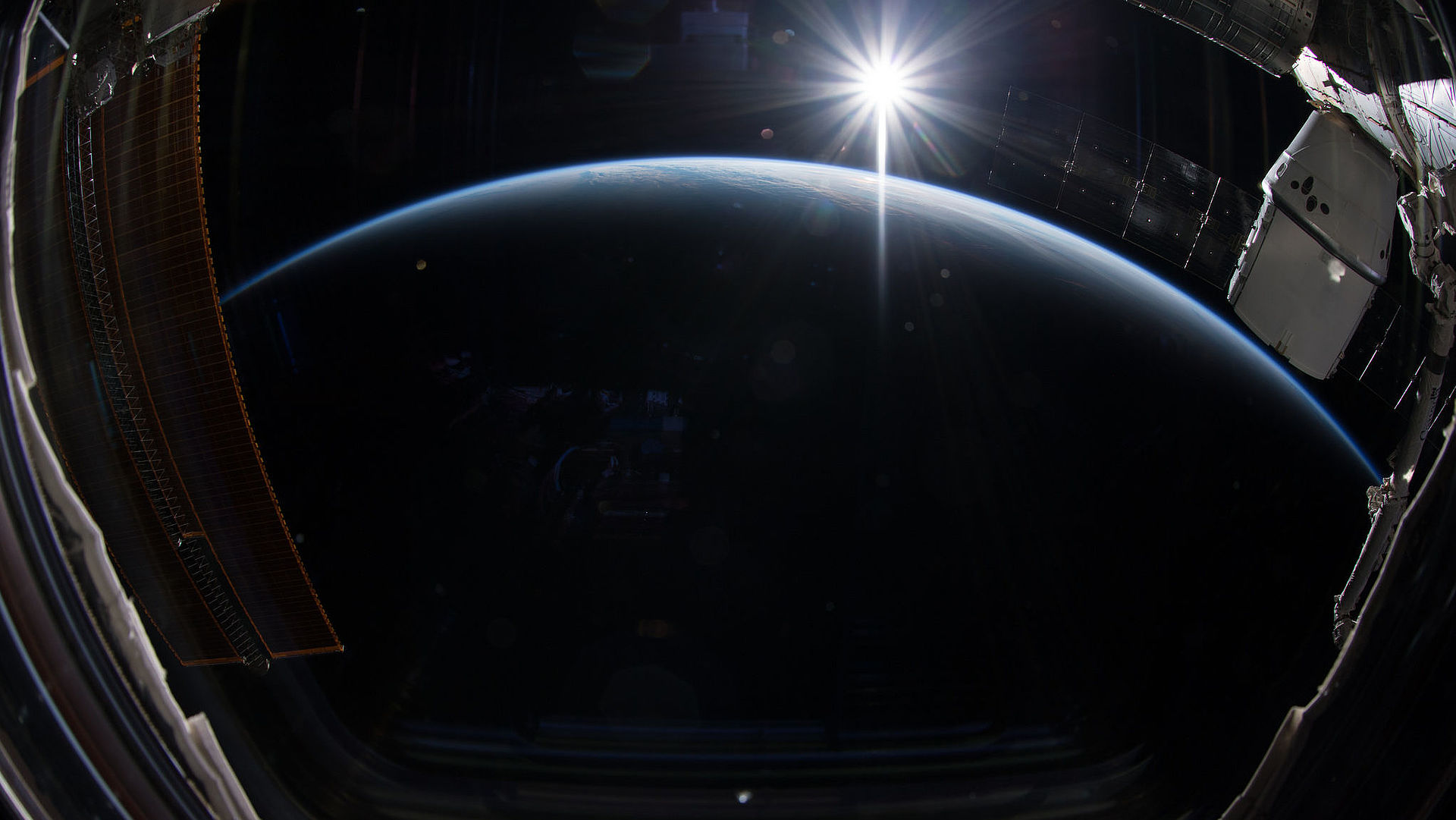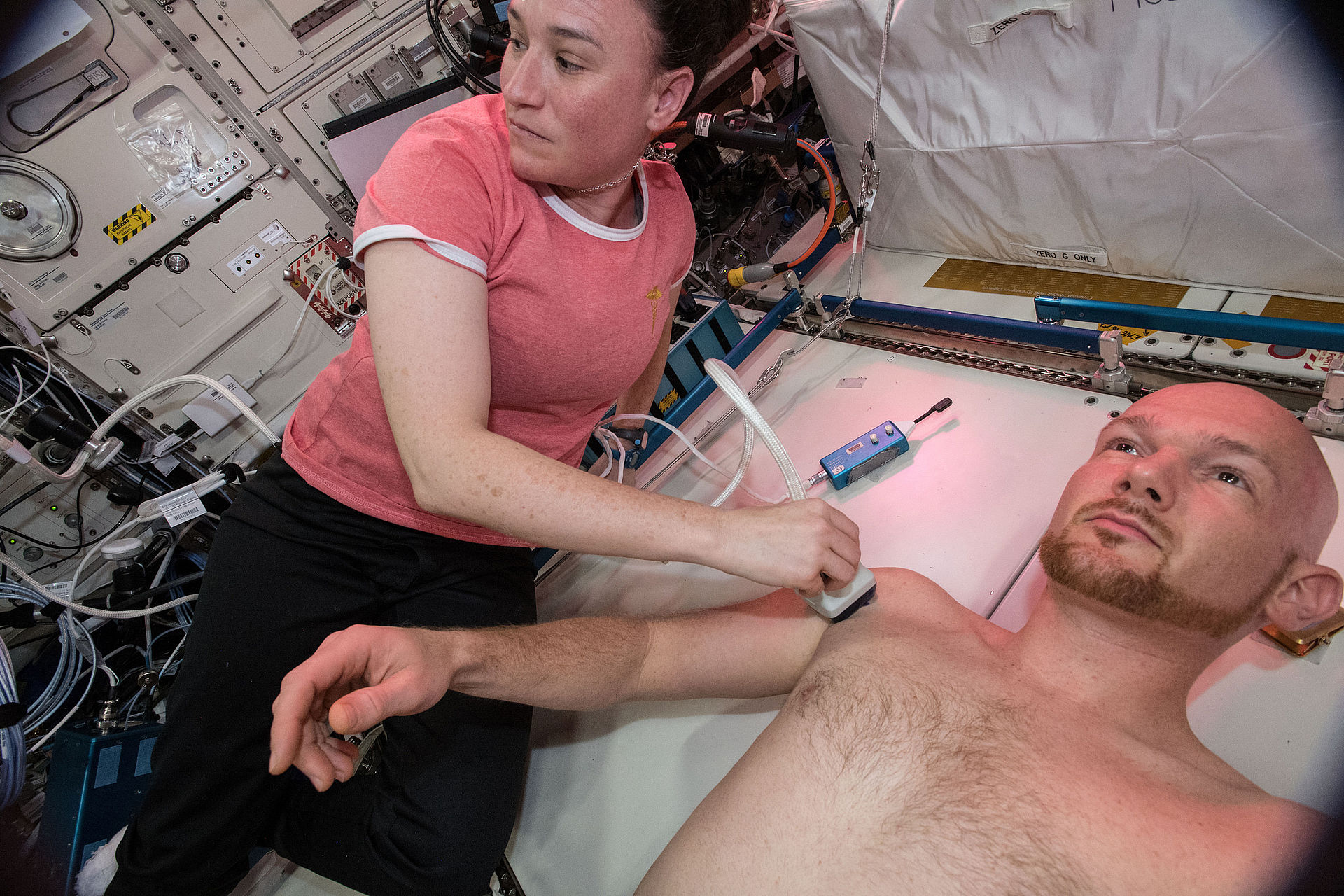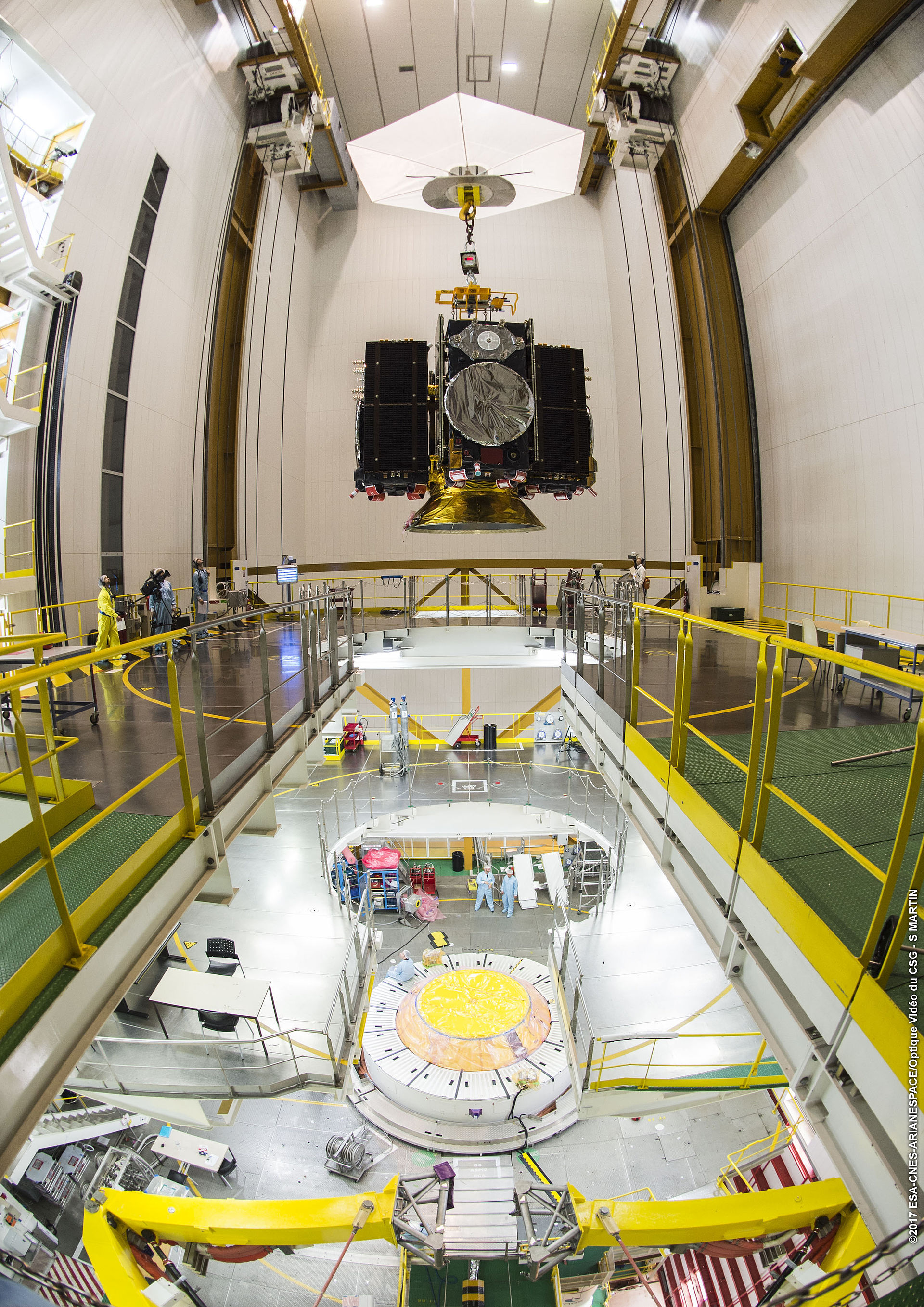Have you ever done just under two hours of sport day for day over a period of six months? Inconceivable? Well, for Alexander Gerst, it’s part of the daily routine on board the International Space Station ISS. This is because the German ESA astronaut’s muscle and bone mass would otherwise deteriorate in the weightless conditions. That’s why Astro Alex, as he is known in the social media, has taken a small piece of Bremen with him on his journey some 400 kilometers above the surface of the earth. For, you see, the Bremen-based space technology company OHB has qualified three MyotonPRO, a commercial-off-the-shelf (COTS) small hand-held Digital Palpation Device (MyotonPRO), developed by Myoton AS, able to measure the human myofascial tension system for the experiments on board the ISS.
MyotonPRO devices tested at OHB
The 42-year-old astronaut is using it to measure changes in his muscle tension in weightless conditions. The research is under the coordination of Prof Dr Dieter Blottner from Charité – Universitätsmedizin Berlin, and sponsored by ESA and DLR. The scientists are eagerly awaiting the results of the experiments as they hope to be able to use them in diagnosing and treating muscle diseases and sports injuries more effectively in the future. The tests will also provide a valuable insight for open field studies and space scientific and clinical applications as well.
“Myotones is an experiment to monitor the tone, stiffness and elasticity of muscles critical for the neuromuscular status when exposed to long term continuous microgravity,” says Antonella Sgambati, Senior System Engineer and Myotones Project Manager at OHB System AG. This is done using a non-invasive, portable device the size of a smartphone called MyotonPRO. Built by Myoton AS in Estonia, it is already available on the market. However, this does not mean that the small device can simply be taken into space as stringent manned safety constrains need to be satisfied to assure the safe-use of the device on board ISS. For this reason, the Myotones team at the OHB’s Human Spaceflight Department has checked and modified some critical parts as glass of the display, power system based mainly on COTS Lithium-Ion Polymer battery pack integrated in the system, making it portable and not-depending from additional infrastructure during the measurements. The OHB team scrutinized the battery and their recharge ability on board, which it has so far not been necessary to replace in all its time in space. The COTS battery from VARTA passed the safety and environmental impact testing and is now orbiting the earth inside the small device at around one-and-a-times an hour.
Show me your muscles: Astro Alex on the Myotones test bench
Each session on board will start with measurements of MyotonPRO. It will collect data from 10 different Measurement Points (MP) on 12 subjects, and then the measurements will be taken by ultrasound. The first non-board session has been conducted in June, Alexander Gerst’s back, arms, legs and feet were tested. Watch this video clip to see more:
“Myotones experiment requires the presence of two crewmembers, one will act as operator and a second one as subject. Later the roles will be inverted. The subject will be fixed in free floating position using the adjustable Myotones belt equipped by standard snap buckle fixed to Columbus infrastructures. Training is required to perform the correct measurement just using one-hand,” explains Antonella Sgambati. And how does the device work? MyotonPRO is equipped with a flat ended cylindrical probe that is placed perpendicular on a pre-marked skin surface over Alexander Gerst’s muscle of interest, the device’s probe applies automatically and user independently controlled constant pre-load force to lightly compress subcutaneous tissues.
This creates a vibration in the skin which the device detects as a basis for evaluating the muscle characteristics. The data is then sent to the earth via the OHB EPM rack. Data transmission is coordinated by OHB and CADMOS at the Toulouse Space Center.
A benefit for humanity
On the earth, the data is sent to Charité Berlin hospital, where it is evaluated. At the hospital, Prof Dr Dieter Blottner is responsible for the ISS experiment. Alexander Gerst will be examined again at the middle and at the end of the mission so that the data can be evaluated in detail. This will make it possible to detect with a high degree of precision any changes in his muscular system after three and six months of weightless conditions. OHB’s blood measurement kit will also be used for ultrasound and blood measurements.
Among other things, the experiment can measure and track the success of his training programs on board the ISS. On the earth, the findings will be used to improve rehab and training programs. Diseases of the muscles, bones and connective tissues are a frequent cause of disabilities. This makes optimized therapies, training programs and an objective assessment of muscle status as well as their efficacy important. The experiment is being funded by Charité Berlin as well as DLR Space Administration and ESA.
It is the type of research that can help to improve the lives of many people on the earth and also support space flight. Office employees and obese people are frequently afflicted by elbow and backpain. At the same time, the elderly and people who are confined to bed for protracted periods of time or who lead sedentary life styles often complain of stiffness or a loss of function. “We think that the device has potential for providing benefits for humanity,” says Dr. Marco Berg, Head of Manned Space Flight and Exploration.
Even Captain Kirk has been reporting on Myotones:






